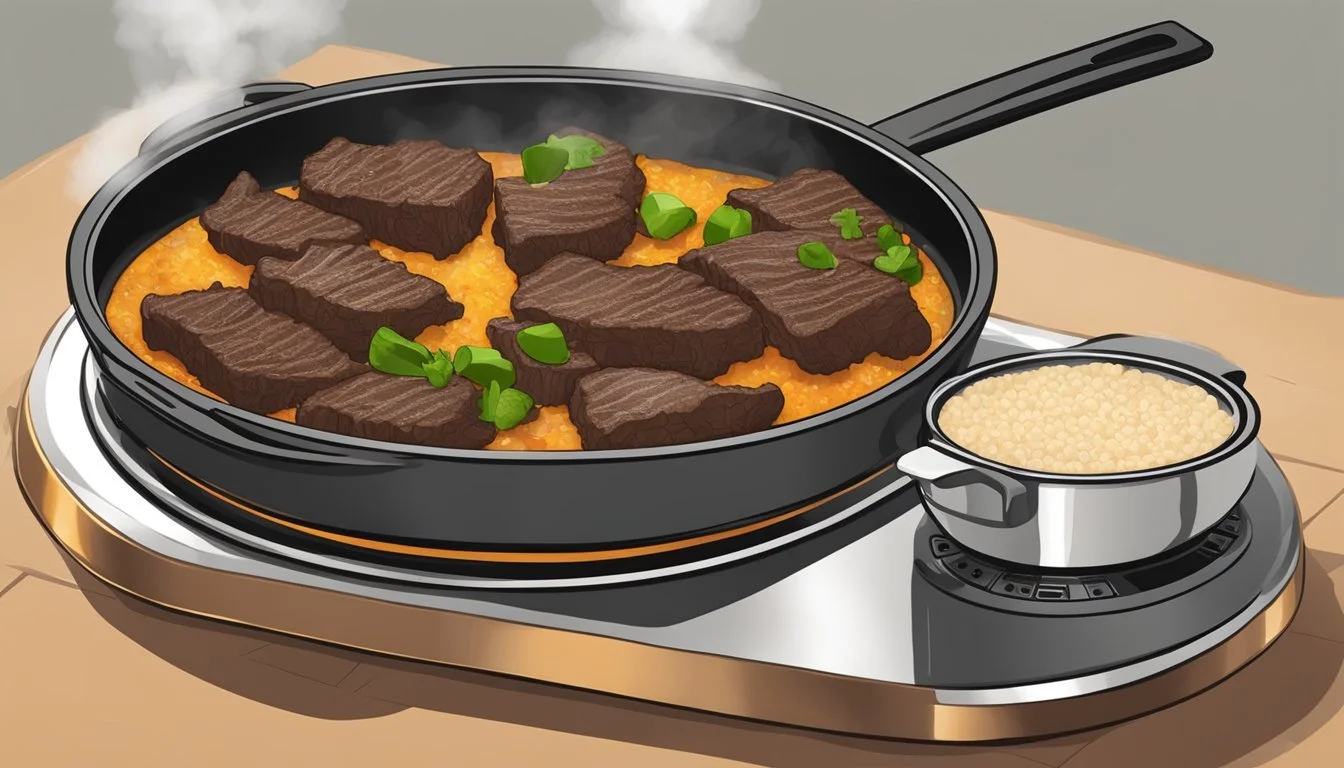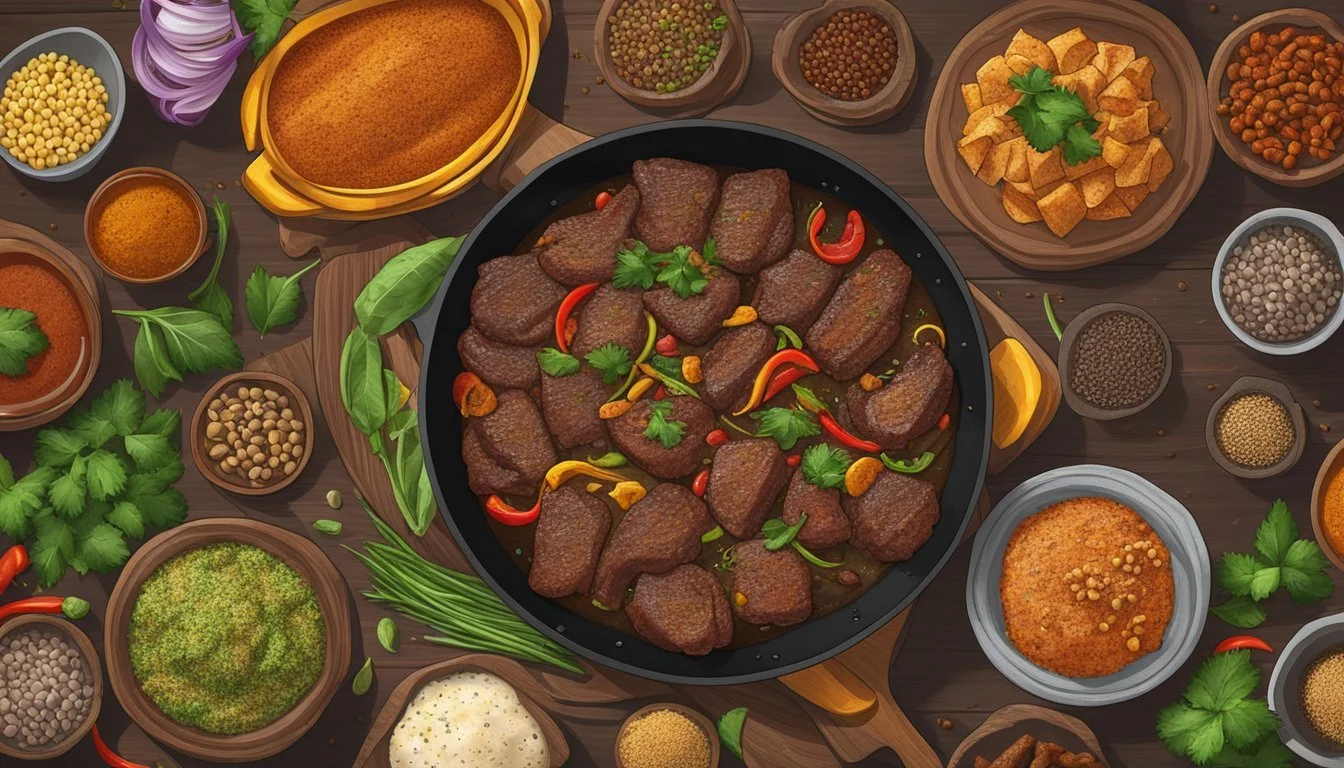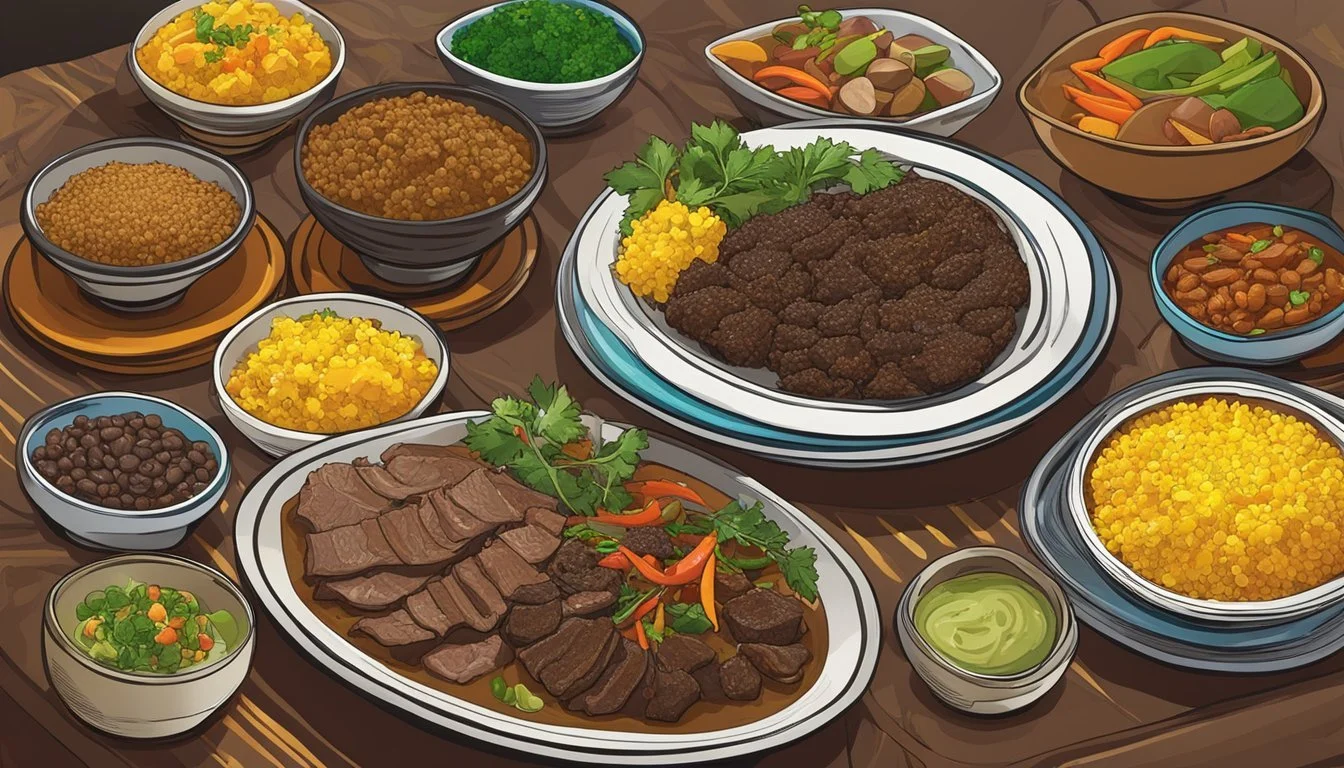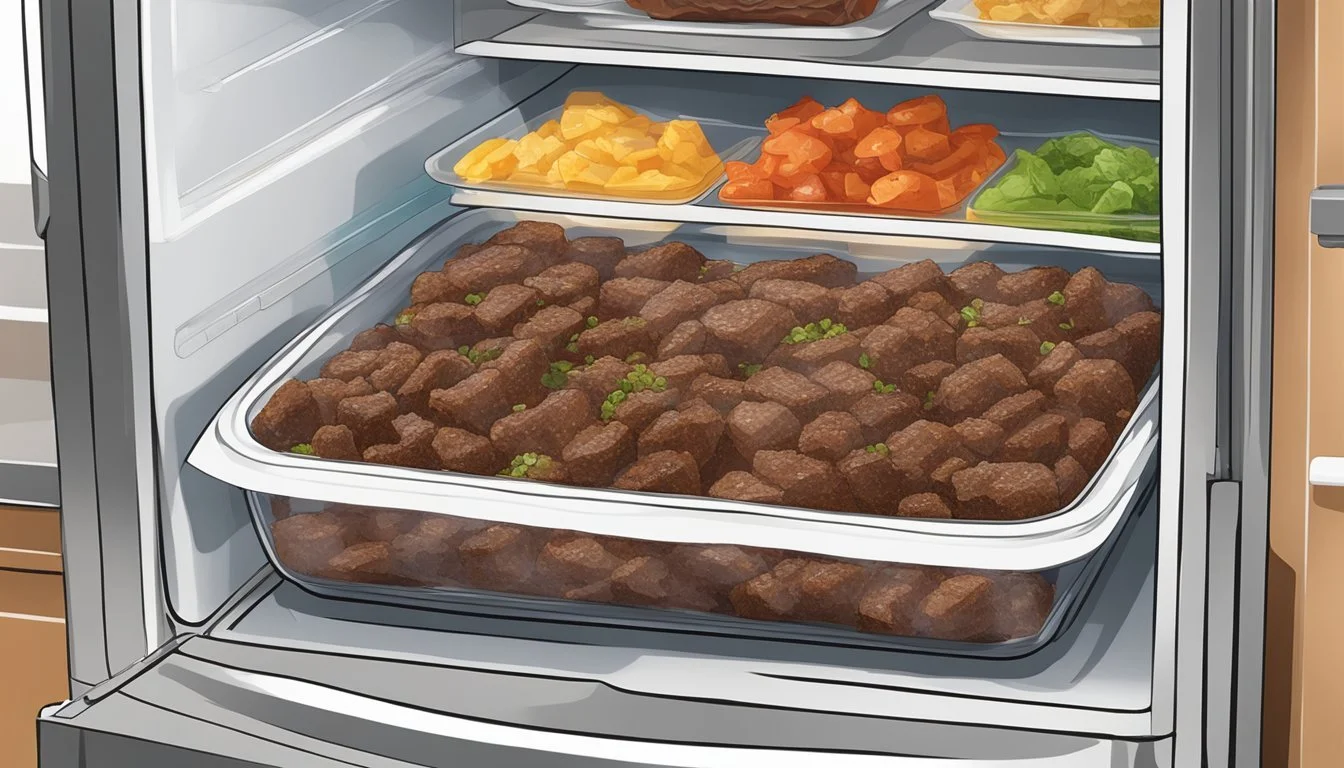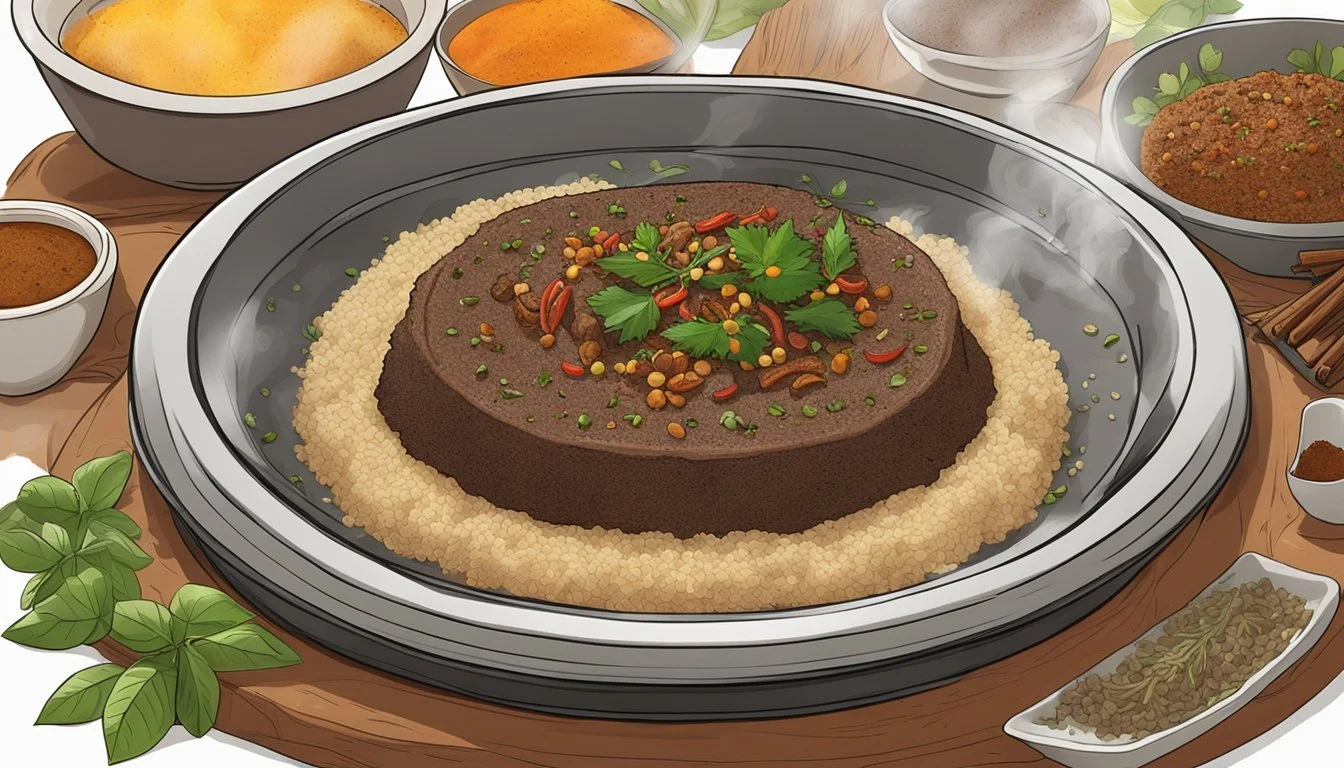Best Way to Reheat Ethiopian Beef Tibs
Tips for Preserving Tenderness
Ethiopian Beef (What wine goes well with beef?) Tibs are a cherished staple in Ethiopian cuisine, known for their rich, spicy flavors and tender meat. The dish consists of sautéed beef, traditionally cooked with a variety of seasonings including berbere spice, and often accompanied by vegetables and injera, a sourdough flatbread. The key to enjoying leftovers is to reheat them in a way that preserves the dish's moisture and tenderness, ensuring it remains as flavorful as when it was first prepared.
Reheating Beef Tibs effectively requires a gentle approach to prevent the meat from becoming tough and to maintain the integrity of its robust flavors. It is essential that the reheating process does not cook the beef further, but instead warms it to a safe and enjoyable temperature. To achieve the best results, utilising a skillet over medium heat seems to be the preferred method among cooks, allowing the beef to be warmed evenly while retaining its succulent texture.
In Ethiopian culinary tradition where communal eating and the preservation of flavors are highly valued, it's important that Beef Tibs are reheated to a point where they can be savored as intended. The food should reach an internal temperature of 165°F (73°C) to ensure it is heated through and safe to eat. With the right reheating technique, the dish can offer the same delightful experience as the original meal.
Understanding Ethiopian Beef Tibs
Ethiopian Beef Tibs is a celebrated dish within the Ethiopian cuisine, known for its rich flavors and tender beef that are accentuated by traditional spices such as Berbere and Niter Kibbeh. This section explores the dish's cultural roots, quintessential ingredients, and customary serving practices.
History and Significance
Ethiopian Beef Tibs is not only a culinary delight but a dish steeped in history and cultural significance. Originating from Ethiopia, a country with a rich and ancient culinary culture, Beef Tibs is often associated with special occasions and social gatherings. The dish reflects a culinary tradition that has been passed down through generations, showcasing the importance of communal dining in Ethiopian society.
Key Ingredients
The key ingredients that set Ethiopian Beef Tibs apart are:
Beef: Ideally tender cuts, chopped into bite-sized pieces.
Berbere Spice: A blend of chili peppers, garlic, ginger, and other spices giving the dish its characteristic heat and depth.
Niter Kibbeh: A spiced clarified butter that imparts a unique aroma and flavor.
Garlic and Onion: These aromatics are foundational to the flavor base.
Additional ingredients like rosemary, jalapeños, and bell peppers might also be included for layers of flavor and a touch of freshness.
Traditional Serving Methods
Ethiopian Beef Tibs is traditionally served with:
Injera: A spongy flatbread made from teff flour that acts as both a plate and utensil.
Sharing Platters: Emphasizing the communal aspect of Ethiopian dining, Beef Tibs is often presented on large platters meant to be shared among diners.
Eating with one's hands by tearing off pieces of injera and scooping up the Beef Tibs is the conventional way to enjoy this Ethiopian dish, allowing for a full sensory experience.
Selecting the Right Beef for Tibs
When creating Ethiopian Beef Tibs, selecting the appropriate beef cut and preparing the meat are crucial steps to ensure a tender and flavorful dish.
Best Cuts for Tibs
The best beef cuts for Tibs are sirloin and ribeye. These cuts strike a balance between tenderness and flavor, providing enough marbling to keep the meat moist during the cooking process.
Sirloin is an ideal choice for Tibs, as it offers a leaner option with minimal fat but still retains enough marbling to ensure the meat remains tender when cooked.
Preferably, one should opt for beef sirloin rather than tougher cuts like round steak to guarantee a tender chew.
Ribeye on the other hand, provides more fat content than sirloin, which can contribute to a richer flavor and a more succulent texture when reheated.
Choosing between sirloin or ribeye depends on personal preference for leaner or fattier meat, respectively.
Meat Preparation
Proper meat preparation enhances the tenderness and flavor of Tibs. The beef should be:
Cut into uniform, medium-sized pieces to ensure even cooking.
Trimmed of excess fat to prevent the dish from being overly greasy while maintaining enough fat for flavor.
The beef pieces are traditionally seasoned with a mix of rosemary and ginger, among other spices. These seasonings complement the natural flavors of the meat:
Rosemary infuses the beef with a distinct, aromatic profile, elevating the overall taste.
Fresh ginger, transformed into a paste, tenderizes the beef while lending a warm and slightly spicy undertone.
Marinating the beef with these ingredients prior to cooking will impart depth and complexity to the Tibs, especially when it's time to reheat and serve.
Reheating Techniques for Retaining Texture
To maintain the tender texture of Ethiopian Beef Tibs while reheating, careful consideration of the method used is crucial. Here we discuss skillet and oven techniques, as well as alternative methods, prioritizing the preservation of the dish's moisture and tenderness.
Using a Skillet
Reheating Beef Tibs in a skillet can closely replicate the initial cooking process. For best results:
Choose a large skillet, preferably a cast iron skillet, for even heat distribution.
Warm the pan on medium heat, then add a small quantity of olive oil to prevent sticking.
Place the Beef Tibs in the skillet and reheat for a few minutes, stirring occasionally to ensure even warmth without overcooking.
Oven-Based Reheating
The oven approach is suited for evenly distributed heat without direct exposure to intense temperatures. To use this method:
Preheat the oven to 350°F (an optimal temperature to warm the Beef Tibs without drying them out).
Transfer the Beef Tibs to an oven-safe dish and cover with a lid or aluminum foil to retain moisture.
Heat for approximately 10-15 minutes, checking periodically, until they reach the desired temperature.
Alternative Methods
While less traditional, alternative appliances can also reheat Beef Tibs while attempting to retain texture:
Air Fryer: Set to a low temperature to prevent the meat from becoming too tough or dry.
Microwave: Use a microwave-safe dish, cover with a damp paper towel to keep the Tibs moist, and use short bursts of power to avoid overheating.
RECITAL: The goal is to ensure the Beef Tibs regain their desirable tenderness and flavor as if freshly prepared.
Seasonings and Spices
Ethiopian Beef Tibs are renown for their rich blend of spices that infuse the dish with distinctive flavors. Proper use and understanding of these spices are paramount in reheating the dish to retain its tender texture and robust taste.
Utilizing Berbere Flavor
Berbere is the quintessential spice blend that gives Ethiopian Beef Tibs its signature heat and aromatic profile. It typically contains chili peppers, garlic, ginger, dried basil, korarima, rue, ajwain or radhuni, nigella, and fenugreek. To rejuvenate the flavors during reheating, one may consider adding a small pinch of Berbere spice blend if it has mellowed. However, care should be taken not to overpower the already seasoned meat.
Main components of Berbere Blend:
Chili peppers (primary source of heat)
Garlic and ginger (for sharpness and warmth)
Ethiopian cardamom (korarima), cloves, or clove (for depth)
Kosher salt (enhances overall flavor profiles)
This spice blend not only contributes to the spiciness but also imparts a complex array of flavors that need to be preserved during the reheating process.
Additional Spices and Herbs
Beyond Berbere, Ethiopian Beef Tibs may include additional spices and herbs such as:
Kibbeh, a spiced clarified butter, might be used to introduce a rich, buttery flavor that carries the spices well.
Salt, especially kosher, is important for its ability to enhance the natural flavors of the beef and the spices. It should be used judiciously to maintain a balance.
Pepper is a common spice that may be paired with Berbere to add another layer of spiciness.
Dried rosemary may feature occasionally for its aromatic, pine-like fragrance and flavor that complements the heat from the Berbere.
By being mindful of these additional ingredients, one ensures that any reheating method employed allows the tender beef to reabsorb the flavors without becoming desiccated or losing its spicy kick. Each spice or herb originally included plays a significant role in the character of the dish and should be taken into account to fully restore its essence upon reheating.
Complementary Sides and Accompaniments
The best way to complement Ethiopian Beef Tibs is through a careful selection of sides that enhance the flavor. Traditional and contemporary accompaniments alike can round out the meal, providing balance and variety to the dish.
Pairing with Injera
Ethiopian Beef Tibs are traditionally served with Injera, a sourdough-risen flatbread with a unique, slightly spongy texture. Made from teff flour, this bread is not only a staple in Ethiopian cuisine but also acts as a utensil for scooping up the tibs. It absorbs the sauces and spices, enhancing the overall dining experience.
Vegetable Options
A selection of vegetables complements the savory notes of the beef tibs. Common options include:
Sautéed onions and tomatoes, which introduce a sweetness balancing the spices in tibs.
Green peppers or bell peppers, which add a crisp texture and a mild, slightly bitter flavor contrast.
Jalapeño, for those who prefer an extra kick, can be diced and sprinkled over the dish.
Alternative Grains and Breads
While injera is the customary choice, other grains and breads can also accompany Ethiopian Beef Tibs:
Rice, especially varieties like basmati, serves as a neutral base that complements the rich flavors.
For a non-traditional twist, pita or sourdough bread can be offered as alternatives to injera, providing a different texture and flavor profile.
Health and Nutritional Considerations
When reheating Ethiopian Beef Tibs, it's essential to consider the nutritional profile of the dish. Beef Tibs are rich in various macro- and micronutrients, and the preparation method can affect these components.
Macro-nutrients in Beef Tibs
Ethiopian Beef Tibs, a protein-rich dish, typically consist of:
Calories: The caloric content varies depending on portion size and added ingredients, but generally falls into a moderate range.
Protein: A substantial amount of the dish's calories come from lean beef, which is an excellent source of protein necessary for muscle repair and growth.
Carbohydrates: The presence of carbs comes from the injera (Ethiopian bread) often served with Tibs, as the meat itself does not contain carbohydrates.
Fiber: Fiber content is usually low in the meat but can be increased by including vegetables like kale or collards in the dish.
Fat: Ethiopian Beef Tibs contain both saturated and unsaturated fats due to the use of niter kibbeh (a type of clarified butter) or oil in cooking. The dish contains no trans fats unless industrially processed ingredients are used.
Cholesterol and Sodium: The beef and niter kibbeh contribute to the dish's cholesterol and sodium levels.
Micro-nutrients and Spices
The beef and spices in Ethiopian Beef Tibs contribute several vital micronutrients:
Vitamins: Vitamin A and C can be found in the peppers and other vegetables that accompany the beef. Spices also may add trace amounts of vitamins.
Minerals: Beef is rich in Potassium and provides some Calcium, contributing to good blood pressure regulation and bone health.
Spices: Often include turmeric, cumin, and coriander, which have been associated with anti-inflammatory properties and digestive benefits.
It's important to note that how one reheats and what one adds to Beef Tibs can impact the nutritional profile, either bolstering it with additional vegetables and spices or increasing unwanted components like sodium or saturated fats.
Food Safety and Storage Tips
Ethiopian Beef Tibs, when stored and reheated properly, can retain their tenderness and flavor. Food safety is crucial to prevent spoilage and foodborne illness.
Proper Cooling and Storage
Ethiopian Beef Tibs should be cooled to room temperature within two hours of cooking. They can harbor bacteria if left out longer. Once cooled, they should be placed in an airtight container and stored in the refrigerator. For longer-term storage, Ethiopian Beef Tibs can be frozen. To do this effectively:
Divide the Tibs into portion-sized containers to avoid thawing more than needed.
Use heavy-duty freezer bags or airtight containers to prevent freezer burn.
Label the containers with the date to keep track of how long they have been stored — ideally, consume within 3 months.
Best Practices for Reheating
Reheating Ethiopian Beef Tibs properly is crucial for maintaining their texture and flavor. The use of clarified butter or vegetable oil can aid in this process. To ensure safe reheating:
Reheat in a skillet over medium heat to distribute the warmth evenly.
Add a small amount of water, clarified butter, or vegetable oil to keep the tibs moist.
Stir occasionally, ensuring all pieces reach a minimum internal temperature of 165°F (73°C) to eliminate potential bacteria.
Maintaining a focus on these storage and reheating practices ensures both safety and quality of the Ethiopian Beef Tibs.
Closing Thoughts
When reheating Ethiopian Beef Tibs, preserving the symphony of flavors and tender texture of the meat is crucial. These meaty delights are best enjoyed when they mirror the freshness and warmth of the original dish. A gentle simmer or a quick stir-fry at a controlled heat ensures that the tibs retain their juiciness and are warmed without drying out.
The key is to heat them just enough, ensuring that the spiced butter, a hallmark of Ethiopian cuisine, mingles evenly with the beef. A splash of water during the reheating process aids in creating steam that gently warms the beef, maintaining its succulence.
Ethiopian Tibs are more than just a meal; they're a social centerpiece. Whether reheated for a quiet dinner at home or shared with friends, one should aim for that perfect blend of spiciness and savory taste that makes Ethiopian cuisine so inviting.
Method Benefit Simmer Retains moisture and tenderness, enhances flavor bond Stir-Fry Quick reheating, preserves texture
Ultimately, reheated Ethiopian Tibs should echo the original dining experience—a testament to the rich culinary traditions of Ethiopia. With careful reheating, one can savor the vibrant mingling of spices and enjoy the communal essence of the dish.

